Priority Queues
COS 265 - Data Structures & Algorithms
Priority Queues
API and Elementary Implemantions
collections
A collection is a data type that stores groups of items
| data type | key operations | data structure |
|---|---|---|
| stack | push, pop |
LL, resizing array |
| queue | enqueue, dequeue |
LL, resizing array |
| priority queue | insert, delete-max |
binary heap |
| symbol table | put, get, delete |
BST, hash table |
| set | add, contains, delete |
BST, hast table |
collections
“Show me your code and conceal your data structures, and I shall continue to be mystified. Show me your data structures, and I won't usually need your code; it'll be obvious
”
—Fred Brooks
priority queue
Collections: Insert and delete items. Which item to delete?
Stack: Remove the item most recently added
Queue: Remove the item least recently added
Randomized queue: Remove a random item
Priority queue: Remove the largest (or smallest) item
insert(P) insert(Q) insert(E) remove-max() => Q insert(X) insert(A) insert(M) remove-max() => X insert(P) insert(L) insert(E) remove-max() => P
priority queue API
Requirement: Generic items are Comparable
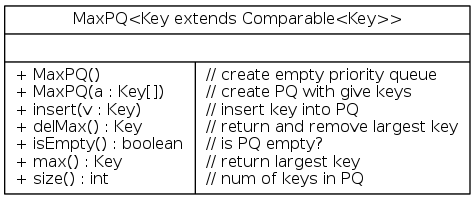
Note: Duplicate keys allowed; delMax() and max() picks any maximum key
priority queue: applications
- event-driven simulation: customers in a line, colliding particles
- numerical computation: reducing roundoff error
- discrete optimization: bin packing, scheduling
- artificial intelligence: A* search
- computer networks: web cache
- operating systems: load balancing, interrupt handling
- data compression: Huffman codes
- graph searching: Dijkstra's algorithm, Prim's algoithm
- number theory: sum of powers
- spam filtering: Bayesian spam filtering
- statistics: online median in data stream
priority queue: client example
Challenge: Find the largest \(M\) items in a stream of \(N\) items, where \(N\) is huge and \(M\) is large
- fraud detection: isolate large $$ transactions
- NSA monitoring: flag most suspicious documents
Constraint: not enough memory to store \(N\) items
$ more transactions.txt Turing 6/17/1990 644.08 vonNeumann 3/26/2002 4121.85 Dijkstra 8/22/2007 2678.40 vonNeumann 1/11/1999 4409.74 Dijkstra 11/18/1995 837.42 Hoare 5/10/1993 3229.27 vonNeumann 2/12/1994 4732.35 Hoare 8/18/1992 4381.21 Turing 1/11/2002 66.10 Thompson 2/27/2000 4747.08 Turing 2/11/1991 2156.86 Hoare 8/12/2003 1025.70 vonNeumann 10/13/1993 2520.97 Dijkstra 9/10/2000 708.95 Turing 10/12/1993 3532.36 Hoare 2/10/2005 4050.20 $ java TopM 5 < transactions.txt # sort key = last col Thompson 2/27/2000 4747.08 vonNeumann 2/12/1994 4732.35 vonNeumann 1/11/1999 4409.74 Hoare 8/18/1992 4381.21 vonNeumann 3/26/2002 4121.85
priority queue: client example
// Transaction data type is Comparable (ordered by $)
// use a min-oriented priority queue
MinPQ<Transaction> pq = new MinPQ<Transaction>();
while(StdIn.hasNextLine()) {
String line = StdIn.readLine();
Transaction transaction = new Transaction(line);
pq.insert(transaction);
if(pq.size() > M)
pq.delMin(); // pq now contains largest M items
}
pq: unordered and ordered array
// unordered ordered // op ret sz contents contents insert(P) 1 P P insert(Q) 2 P Q P Q insert(E) 3 P Q E E P Q delMax() Q 2 P E E P insert(X) 3 P E X E P X insert(A) 4 P E X A A E P X insert(M) 5 P E X A M A E M P X delMax() X 4 P E A M A E M P insert(P) 5 P E A M P A E M P P insert(L) 6 P E A M P L A E L M P P insert(E) 7 P E A M P L E A E E L M P P delMax() P 6 E A M P L E A E E L M P P
A sequence of operations on a priority queue that is implemented using unordered array (left) and ordered array (right)
pq: implementations cost summary
| implementation | insert |
delMax |
max |
|---|---|---|---|
| unordered array | \(1\) | \(N\) | \(N\) |
| ordered array | \(N\) | \(1\) | \(1\) |
| goal for today | \(\log N\) | \(\log N\) | \(\log N\) |
Order of growth of running time for priority queue with \(N\) items
Priority Queues
Binary Heaps
complete binary tree
Binary tree: Empty or node with links to left and right binary trees
Complete tree: Perfectly balanced, except for bottom level
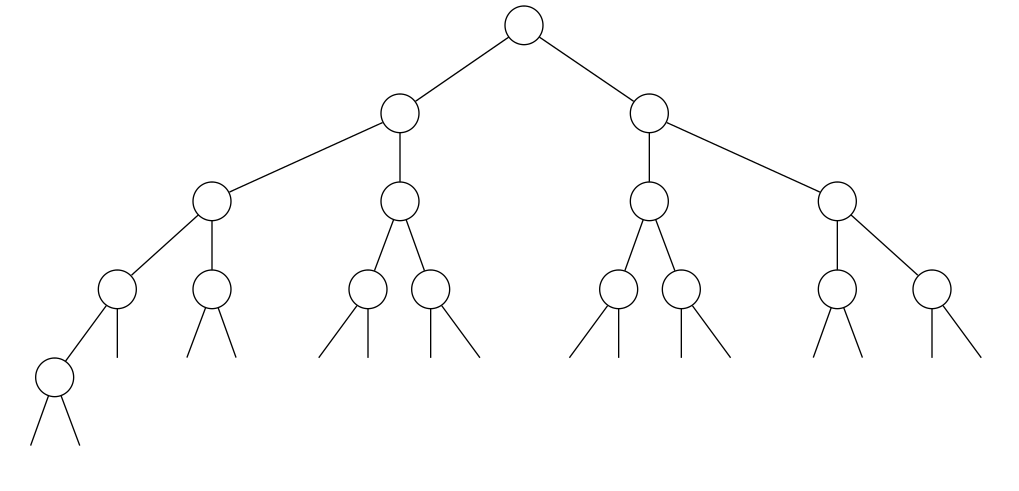
complete binary tree with \(N=16 \text{ nodes}\) (\(\text{height} = 4\))
Property: Height of complete binary tree with \(N\) nodes is \(\lfloor \lg N \rfloor\).
Pf: Height increases only when \(N\) is a power of \(2\).
complete binary tree in nature

complete binary tree: array representation
Array representation
- Indices start at 1
- Take nodes in level order
- Children of node \(k\) at locations \(2k\) and \(2k+1\)
- No explicit links needed!
complete binary tree: array representation
0 1 2 3 4 5 6 7 8 9 10 11
a[i] = [ . T S R P N O A E I H G]
T
S R
P N O A
E I H G
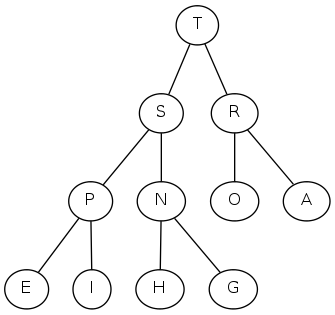
priority queues: quiz 1
What is the index of the parent of the item at index \(k\) in a binary heap?
|
A. \(k/2 - 1\) |
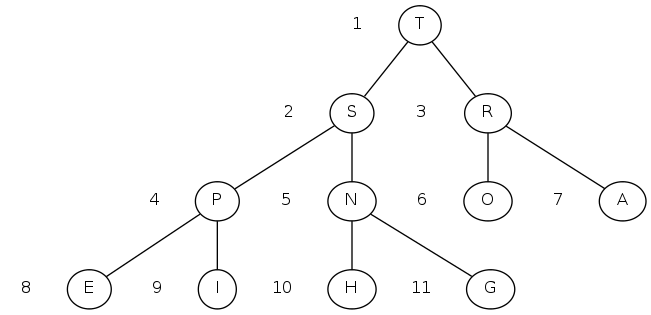 |
0 1 2 3 4 5 6 7 8 9 10 11 a[i] = [ . T S R P N O A E I H G]
binary heap
Array representation
- Indices start at 1
- Take nodes in level order
- Children of node \(k\) at locations \(2k\) and \(2k+1\)
- No explicit links needed!
Max-Heap ordering
- Keys in nodes
- Parent's key no smaller than children's keys
- "Just enough" ordering to support efficient priority queue operations
Binary heap: Array representation of a heap-ordered complete binary tree
binary heap: properties
"Just enough" ordering to support efficient priority queue operations.
- Largest key is
a[1], which is the root of the binary tree - Can use array indices to move through the tree
- Children of node at
kat locations2*kand2*k+1 - Parent of node at
kis atk/2
- Children of node at
insert()anddelMax()violate heap order, but easy to fix up
binary heap demo
Insert: Add node at end, them swim it up
Remove the maximum: Exchange root with node at end, then sink it down
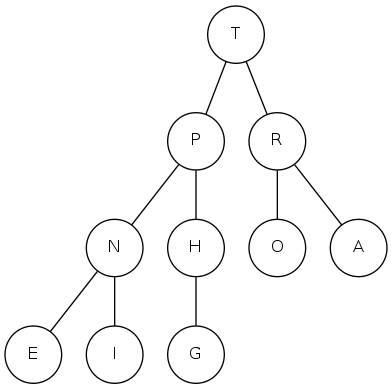

binary heap demo
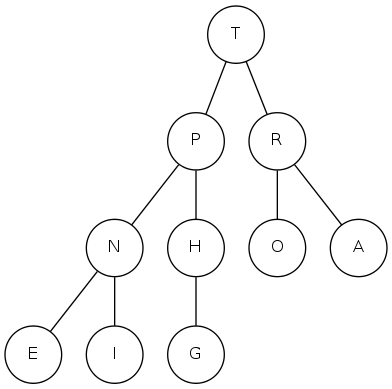
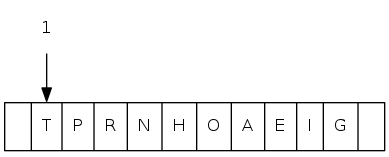
binary heap demo
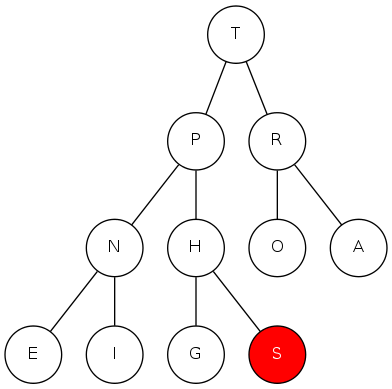
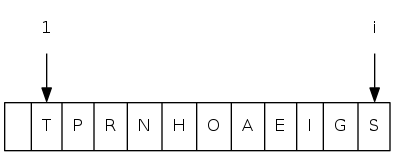
binary heap demo

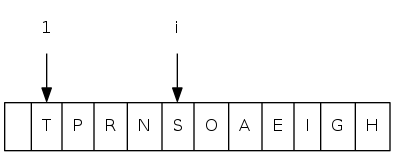
binary heap demo
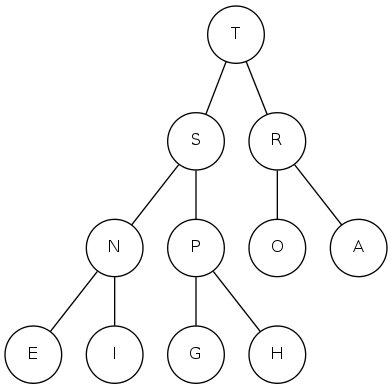
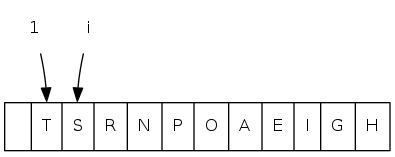
binary heap demo

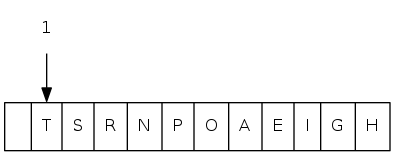
binary heap demo
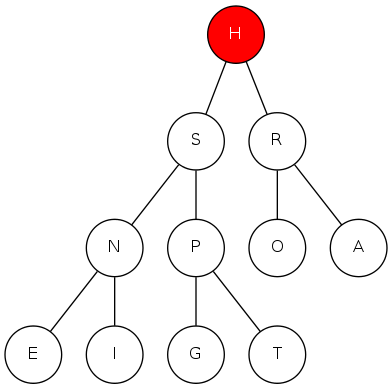
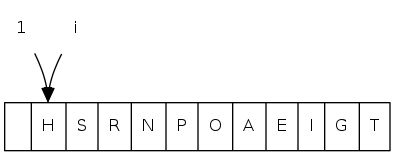
binary heap demo
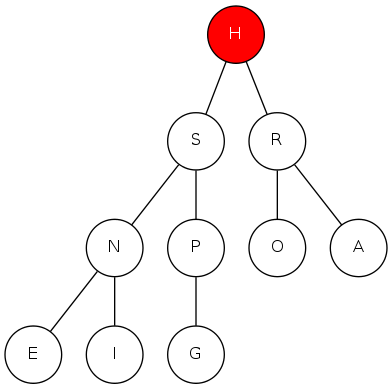
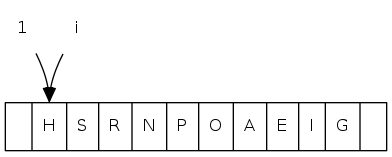
binary heap demo
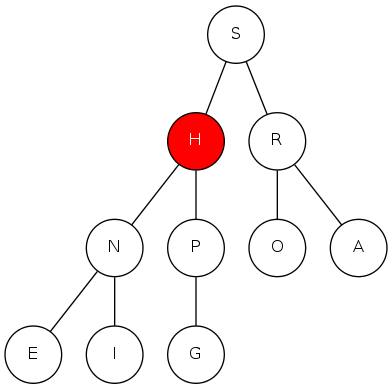
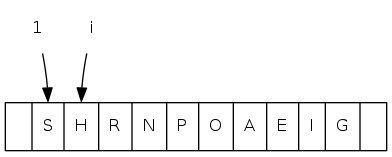
binary heap demo

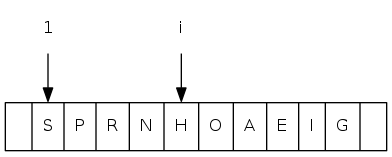
binary heap demo
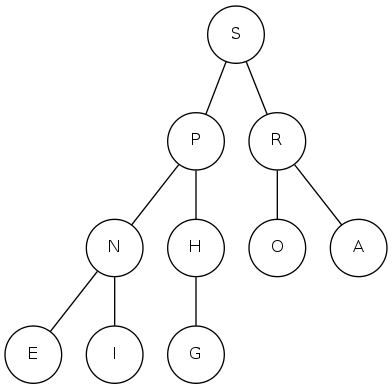
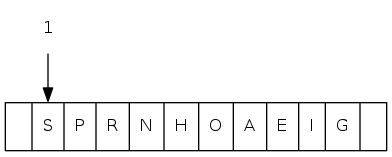
binary heap demo
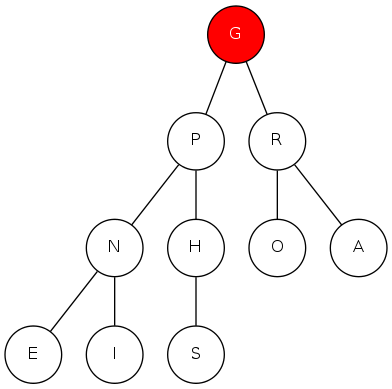
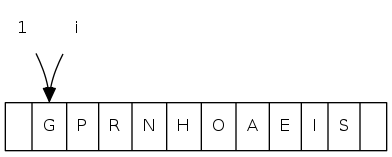
binary heap demo
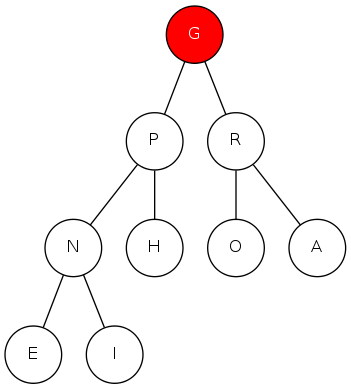
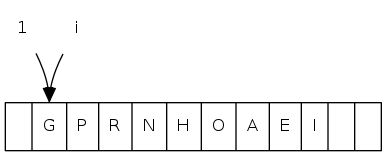
binary heap demo
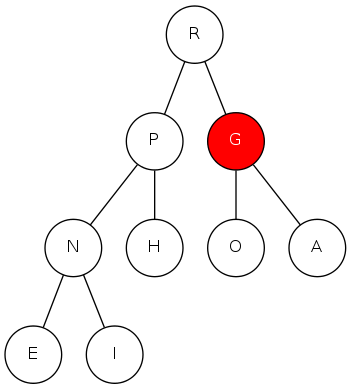
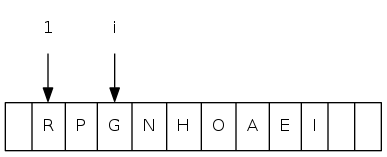
binary heap demo
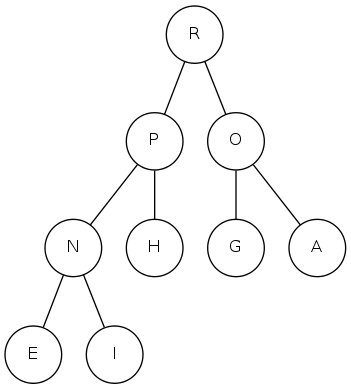
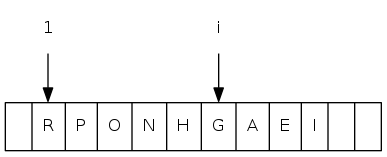
binary heap demo


binary heap demo

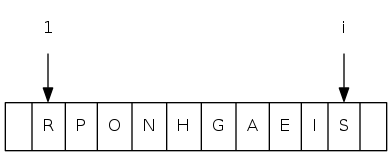
binary heap demo
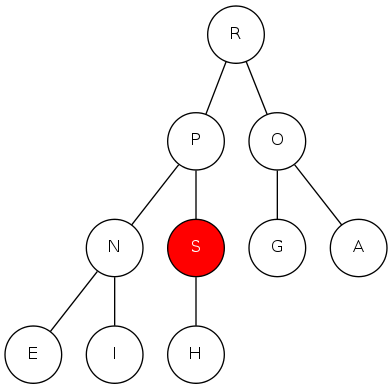
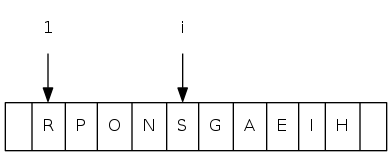
binary heap demo
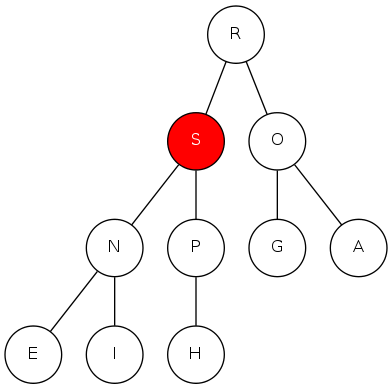
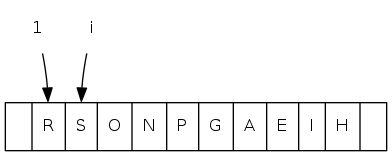
binary heap demo
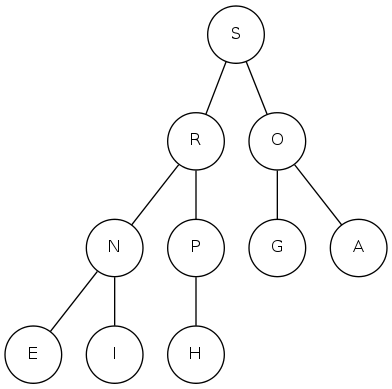
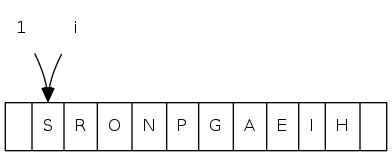
binary heap demo

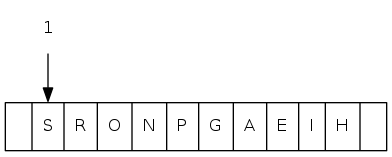
binary heap: promotion
Scenario: A key becomes larger than its parent's key
To eliminate the violation:
- Exchange key in child with key in parent
- Repeat until heap order restored
private void swim(int k) {
while(k > 1 && less(k/2, k)) {
exch(k, k/2);
k = k/2;
}
}
binary heap: promotion
 |
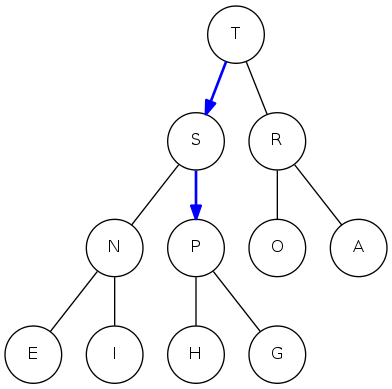 |
binary heap: insertion
Insert: Add node at end, then swim it up
Cost: At most \(1+\lg N\) compares
public void insert(Key k) {
pq[++N] = k;
swim(N);
}
binary heap: insertion
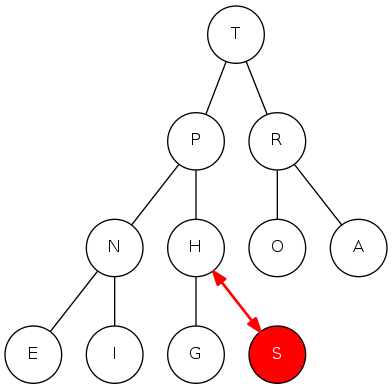 |
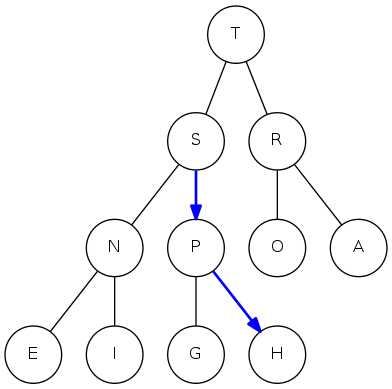 |
binary heap: demotion
Scenario: A key becomes smaller than one (or both) of its children's
To eliminate the violation:
- Exchange key in parent with key in larger child (why not smaller child?)
- Repeat until heap order is restored
private void sink(int k) {
while(2*k <= N) {
int j = 2*k; // first child
if(j < N && less(j, j+1)) j++; // second is larger
if(!less(k, j)) break; // parent > child?
exch(k, j);
k = j;
}
}
binary heap: demotion
 |
 |
binary heap: delete the maximum
Delete max: Exchange root with node at end, then sink it down
Cost: At most \(2 \lg N\) compares
public Key delMax() {
Key max = pq[1];
exch(1, N);
pq[N--] = null; // prevent loitering!
sink(1);
return max;
}
binary heap: delete the maximum
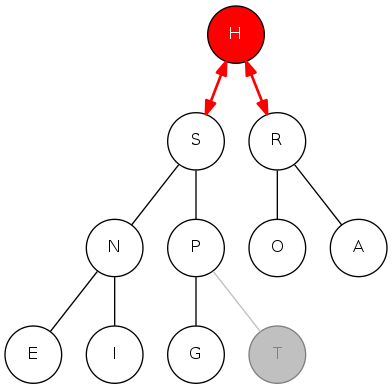 |
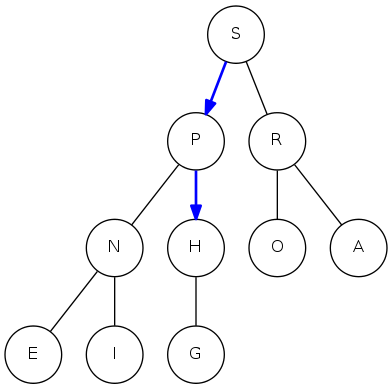 |
binary heap: java implementation
public class MaxPQ<Key extends Comparable<Key>> {
private Key[] pq;
private int N;
public MaxPQ(int capacity) {
pq = (Key[]) new Comparable[capacity+1];
}
public boolean isEmpty() { return N == 0; }
public void insert(Key key) { /* see prev code */ }
public Key delMax() { /* see prev code */ }
private void swim(int k) { /* see prev code */ }
private void sink(int k) { /* see prev code */ }
private boolean less(int i, int j) {
return pq[i].compareTo(pq[j]) < 0;
}
private void exch(int i, int j) {
Key t = pq[i];
pq[i] = pq[j];
pq[j] = t;
}
}
pq: implementations cost summary
| implementation | insert |
delMax |
max |
|---|---|---|---|
| unordered array | \(1\) | \(N\) | \(N\) |
| ordered array | \(N\) | \(1\) | \(1\) |
| binary heap | \(\log N\) | \(\log N\) | \(1\) |
order-of-growth of running time for priority queue with \(N\) items
delete-random from a binary heap
Challenge: Delete a random key from a binary heap in logarithmic time
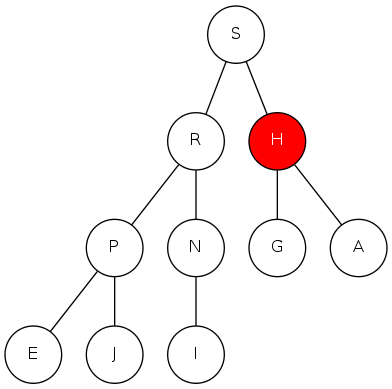
binary heap: practical improvements
Do "half-exchanges" in sink or swim
- Reduces number of array accesses
- Worth doing
binary heap: practical improvements
Multiway heaps
- Complete \(d\)-way tree
- Parent's key no smaller than any of its children's keys
Fact: Height of complete \(d\)-way tree on \(N\) nodes is \(\texttilde \log_d N\)

priority queues: quiz 2
How many compares (in the worst case) to insert in a \(d\)-way heap?
A. \(\texttilde \log_2 N\)
B. \(\texttilde \log_d N\)
C. \(\texttilde d \log_2 N\)
D. \(\texttilde d \log_d N\)
E. I don't know
priority queues: quiz 3
How many compares (in the worst case) to delete-max in a \(d\)-way heap?
A. \(\texttilde \log_2 N\)
B. \(\texttilde \log_d N\)
C. \(\texttilde d \log_2 N\)
D. \(\texttilde d \log_d N\)
E. I don't know
pq: implementations cost summary
| implementation | insert |
delMax |
max |
|---|---|---|---|
| unordered array | \(1\) | \(N\) | \(N\) |
| ordered array | \(N\) | \(1\) | \(1\) |
| binary heap | \(\log N\) | \(\log N\) | \(1\) |
| \(d\)-ary heap | \(\log_d N\) | \(d \log_d N\) | \(1\) |
| Fibonacci | \(1\) | \(\log N^*\) | \(1\) |
| Brodal queue | \(1\) | \(\log N\) | \(1\) |
| impossible | \(1\) | \(1\) | \(1\) |
\(^*\) amortized
sweet spot for \(d\) is \(d=4\)
why is last line impossible?
order-of-growth of running time for priority queue with \(N\) items
binary heap: considerations
Underflow and overflow
- Underflow: throw exception if deleting from empty PQ
- Overflow: add no-arg constructor and use resizing array (leads to \(\log N\) amortized time per op; how to make worst case?)
Minimum-oriented priority queue
- Replace
less()withgreater() - Implement
greater()
binary heap: considerations
Binary heap is not cache friendly (ex: page size = 8 nodes)
- Cache-aligned \(d\)-heap
- Funnel heap
- B-heap
- ...
binary heap: considerations
Other operations
- Remove an arbitrary item
- Change the priority of an item
- Can implement both efficiently with
sink()andswim()(stay tuned for Prim/Dijkstra)
Immutability of keys
- Assumption: client does not change keys while they're on the PQ
- Best practice: use immutable keys
immutability: implementing in Java
Data type: set of values and operations on those values
Immutable data type: cannot change the data type value once created
public final class Vector { // final = can't override
// instance methods
private final int N; // instance vars private
private final double[] data; // and final
public Vector(double[] data) {
this.N = data.length;
this.data = new double[N];
for(int i = 0; i < N; i++) // defensive copy of
this.data[i] = data[i]; // mutable instance vars
}
/* ... */ // instance methods don't
// change instance vars
}
immutability: implementing in Java
Immutable: String, Integer, Double, Color, Vector, Transaction, Point2D
Mutable: StringBuilder, Stack, Counter, Java array
Advantages of immutability:
- Simplifies debugging
- Safer in presence of hostile code
- Simplifies concurrent programming
- Safe to use as key in priority queue or symbol table
Disadvantage: Must create new object for each data type value
immutability: implementing in Java
“Classes should be immutable unless there's a very good reason to make them mutable. [...] If a class cannot be made immutable, you should still limit its mutability as much as possible.
”
—Joshua Bloch (Java architect)

Priority Queues
Heapsort
Priority queues: quiz 4
What is the name of this sorting algorithm?
public void sort(String[] a) {
int N = a.length;
MaxPQ<String> pq = new MaxPQ<String>();
for(int i = 0; i < N; i++) pq.insert(a[i]);
for(int i = N-1; i >= 0; i--) a[i] = pq.delMax();
}
A. insertion sort
B. mergesort
C. quicksort
D. None of the above
E. I don't know
priority queues: quiz 5
What are its properties?
public void sort(String[] a) {
int N = a.length;
MaxPQ<String> pq = new MaxPQ<String>();
for(int i = 0; i < N; i++) pq.insert(a[i]);
for(int i = N-1; i >= 0; i--) a[i] = pq.delMax();
}
A. \(N \lg N\) compares in the worst case
B. in-place sorting
C. stable sorting
D. All of the above
E. I don't know
heapsort
Basic plan for in-place sort
- View input array as a complete binary tree
- Heap construction: build a max-heap with all \(N\) keys
- Sortdown: repeatedly remove the maximum key
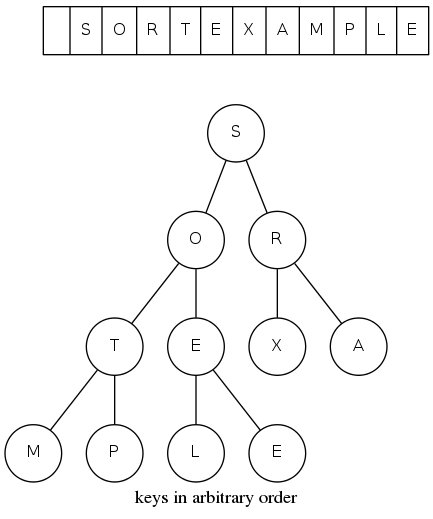
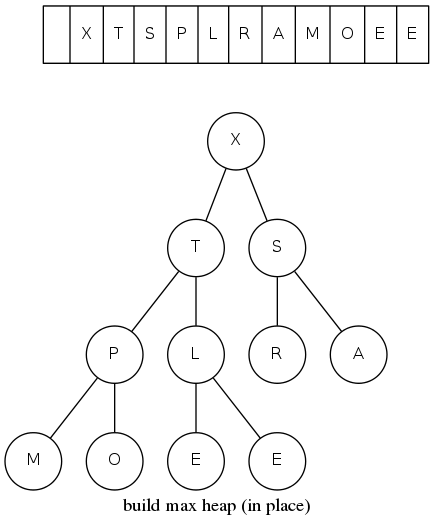
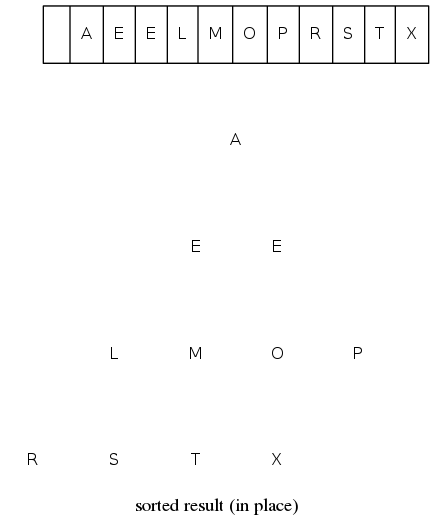
heapsort demo
Heap construction: build max heap using bottom-up method (we assume array entries are indexed 1 to N)
Sortdown: Repeatedly delete the largest remaining item
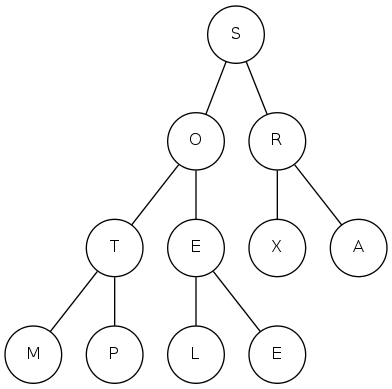
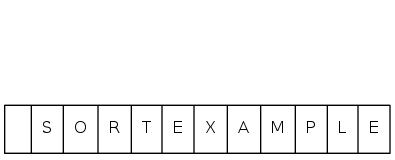
heapsort demo
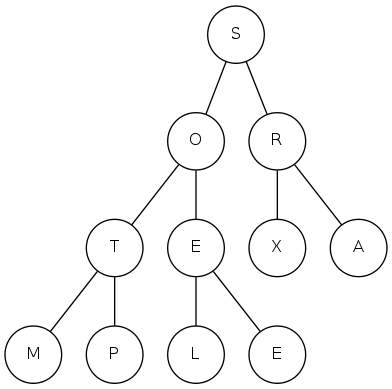
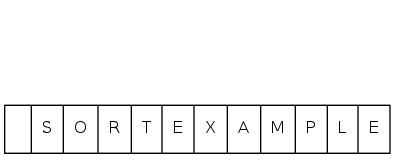
heapsort demo
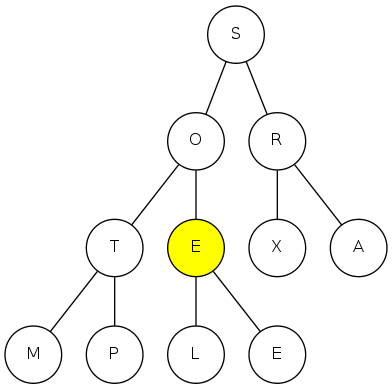
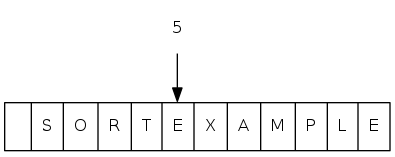
sink(5)
heapsort demo
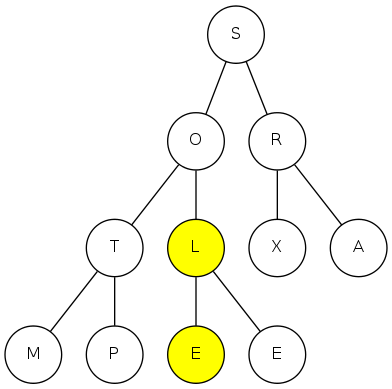

sink(5)
heapsort demo
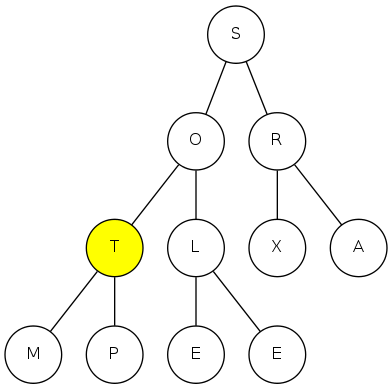
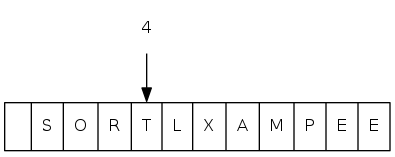
sink(4)
heapsort demo
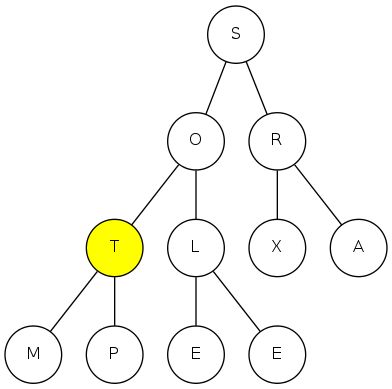

sink(4)
heapsort demo
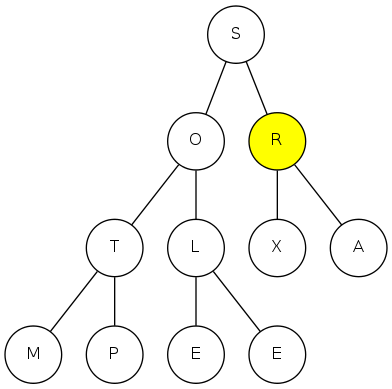
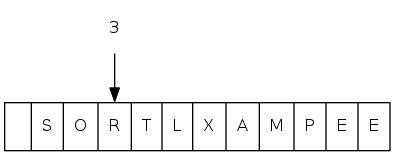
sink(3)
heapsort demo
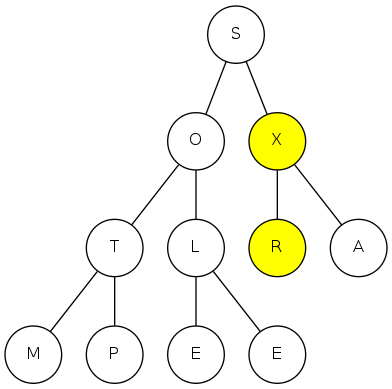
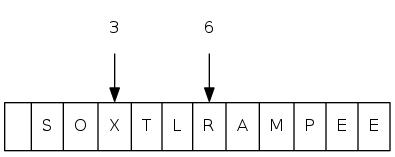
sink(3)
heapsort demo
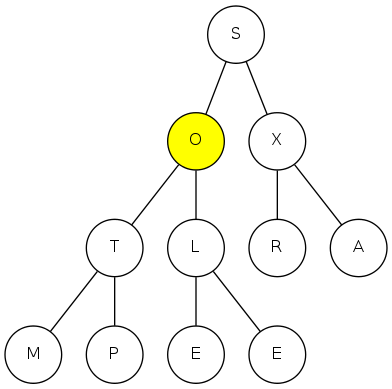
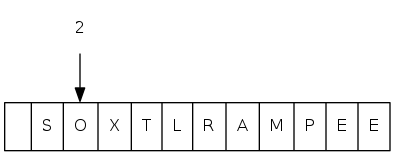
sink(2)
heapsort demo
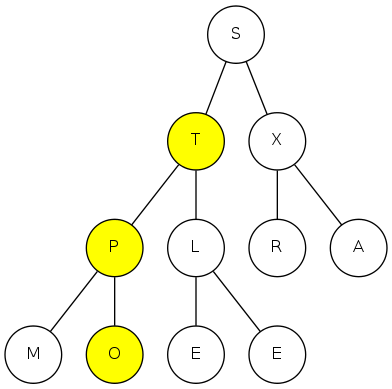
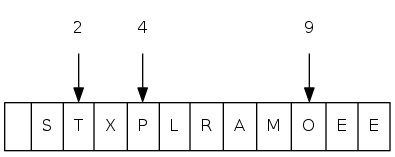
sink(2)
heapsort demo
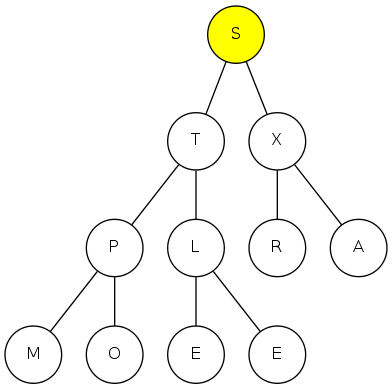
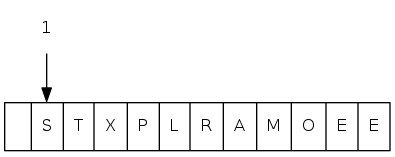
sink(1)
heapsort demo

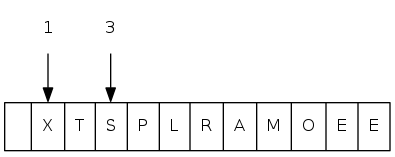
sink(1)
heapsort demo
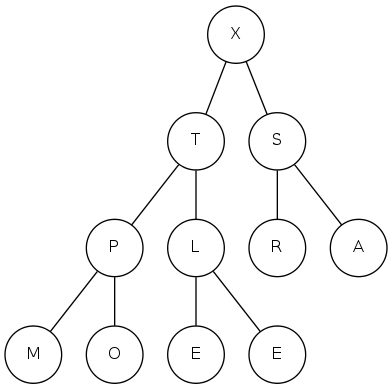
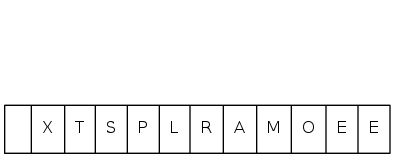
max-heap!
heapsort demo
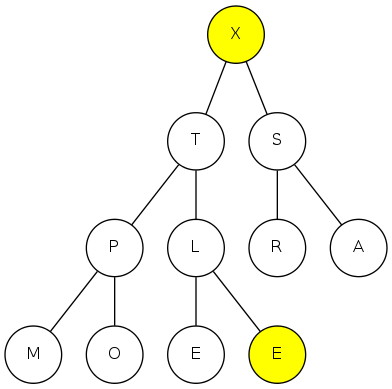
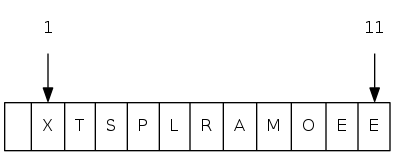
exch(11), then sink(1)
heapsort demo
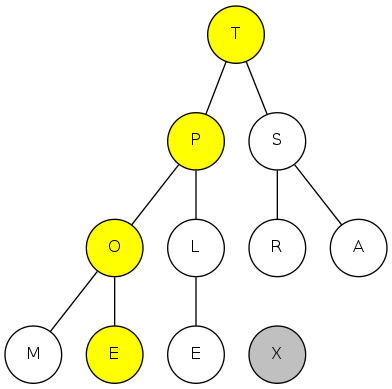

exch(10), then sink(1)
heapsort demo
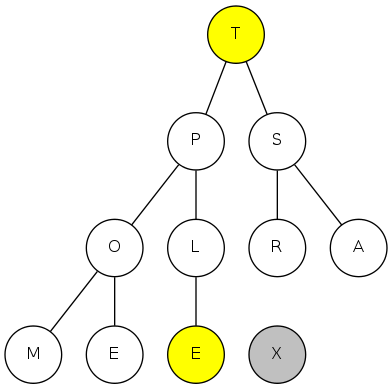
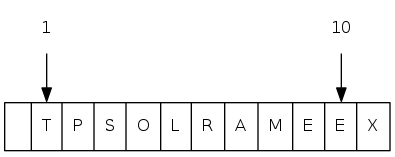
exch(10), then sink(1)
heapsort demo
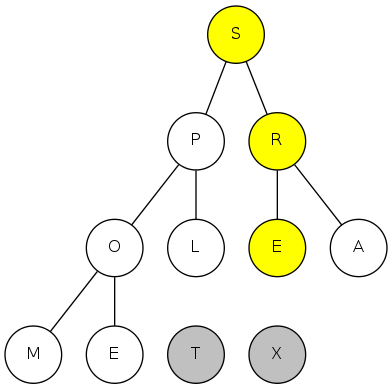
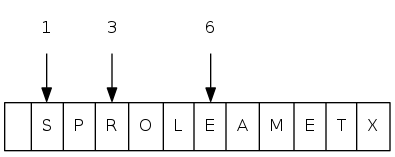
exch(9), then sink(1)
heapsort demo
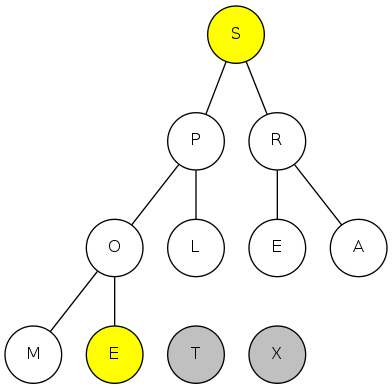
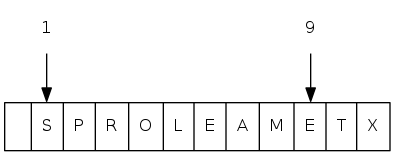
exch(9), then sink(1)
heapsort demo
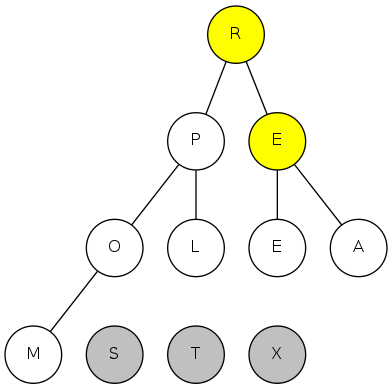
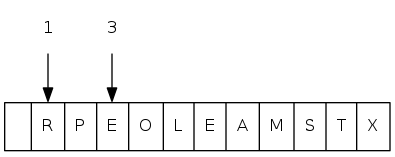
exch(8), then sink(1)
heapsort demo
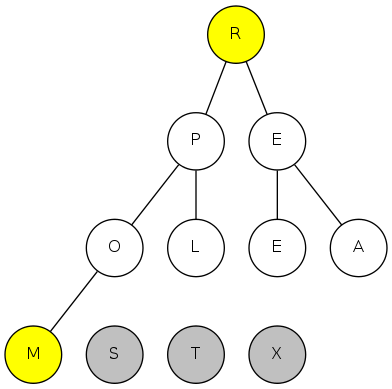
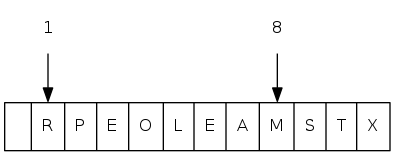
exch(8), then sink(1)
heapsort demo
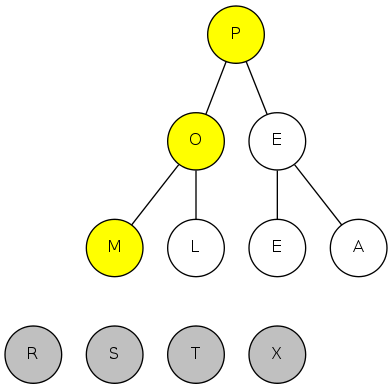
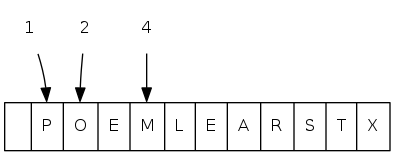
exch(7), then sink(1)
heapsort demo
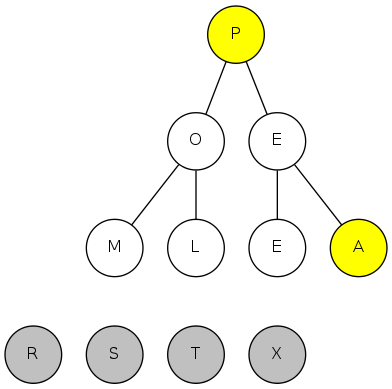
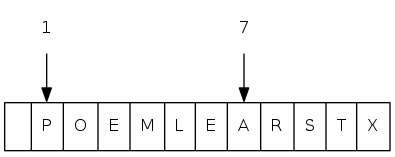
exch(7), then sink(1)
heapsort demo
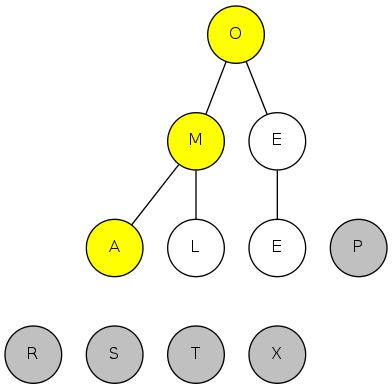
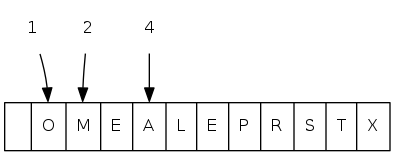
exch(6), then sink(1)
heapsort demo
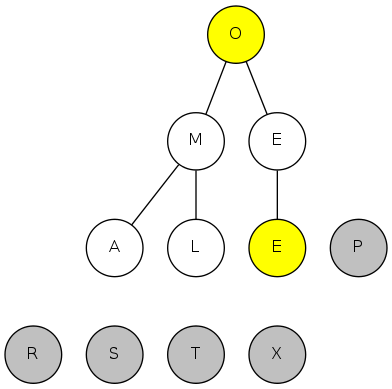
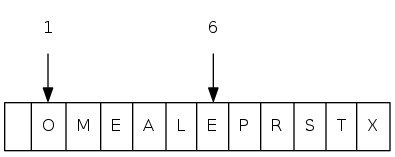
exch(6), then sink(1)
heapsort demo
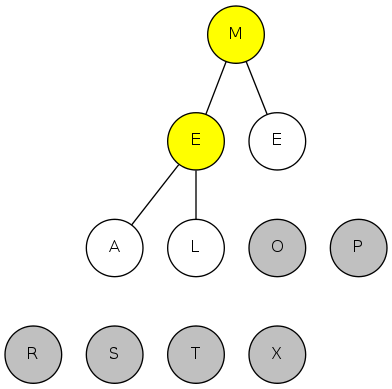
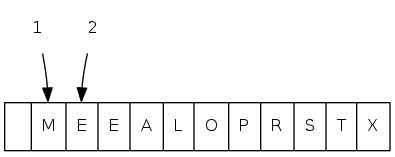
exch(5), then sink(1)
heapsort demo
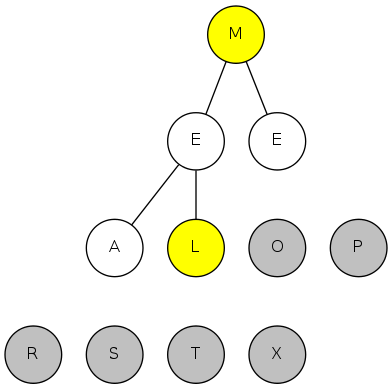
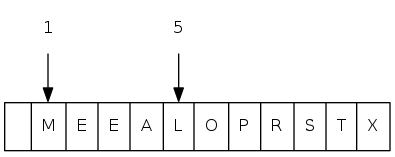
exch(5), then sink(1)
heapsort demo
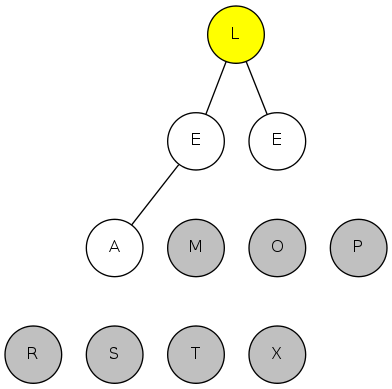

exch(4), then sink(1)
heapsort demo

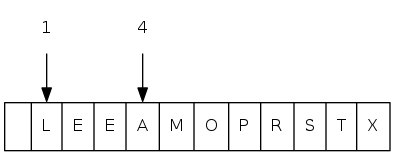
exch(4), then sink(1)
heapsort demo
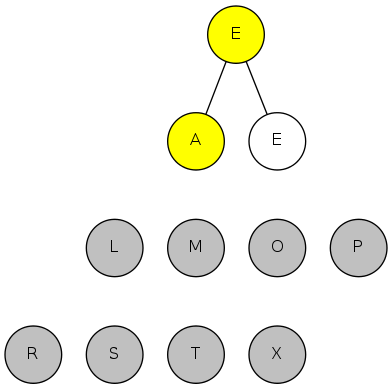
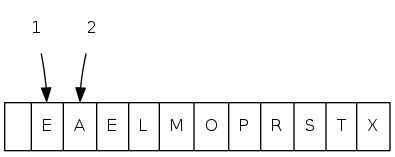
exch(3), then sink(1)
heapsort demo
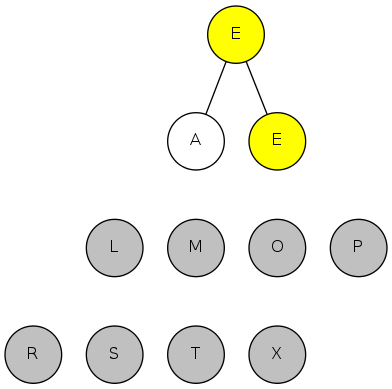
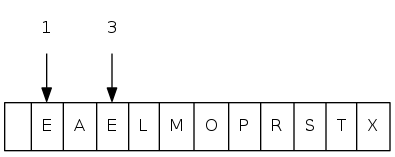
exch(3), then sink(1)
heapsort demo

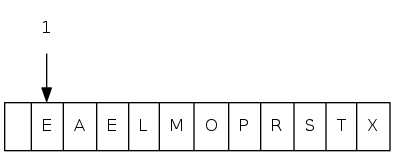
exch(2), then sink(1)
heapsort demo
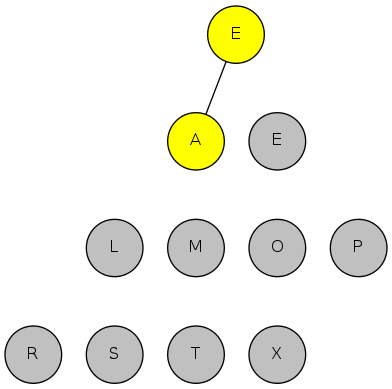

exch(2), then sink(1)
heapsort demo
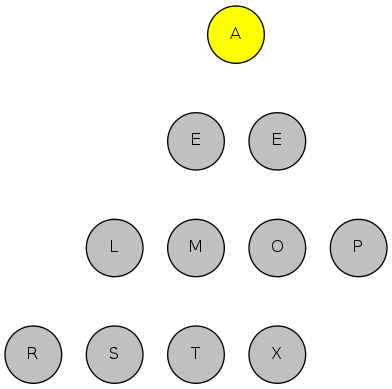
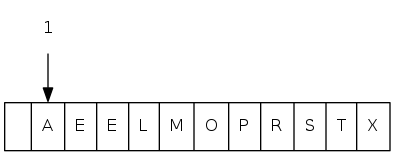
exch(1), then sink(1)
heapsort demo
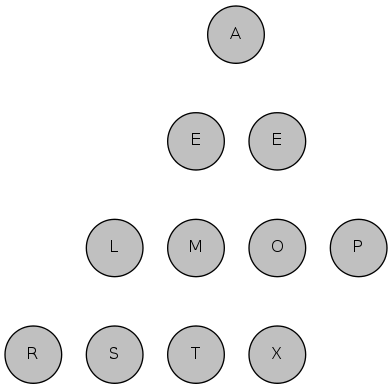
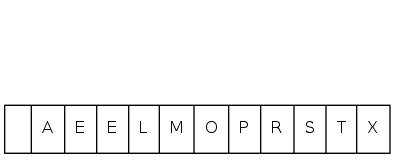
done sorting!
heapsort: heap construction
Heap construction (first pass):
- Build heap using bottom-up method
for(int k = N/2; k >= 1; k--)
sink(a, k, N);
Sortdown (second pass):
- Remove the maximum, one at a time
- Leave in array, instead of nulling out
while(N > 1) {
exch(a, 1, N--);
sink(a, 1, N);
}
heapsort: java implementation
public class Heap {
public static void sort(Comparable[] a) {
int N = a.length;
for(int k = N/2; k >= 1; k--) sink(a, k, N);
while(N > 1) {
exch(a, 1, N);
sink(a, 1, --N);
}
}
private static void sink(Comparable[] a, int k, int N) {
/* as before, but make static and pass arguments */
}
private static boolean less(Comparable[] a, int i, int j) {
/* as before, but convert from 1-based indexing to 0-base */
}
private static void exch(Object[] a, int i, int j) {
/* as before, but convert from 1-based indexing to 0-base */
}
}
heapsort: trace
N k 0 1 2 3 4 5 6 7 8 9 10 11
S O R T E X A M P L E initial values
11 5 . . . . L . . . . E E
11 4 . . . T . . . M P . .
11 3 . . X . . R A . . . .
11 2 . T . P L . . M O . .
11 1 X T S . . R A . . . .
X T S P L R A M O E E heap-ordered
10 1 T P S O L . . M E . X
9 1 S P R . . E A . . T .
8 1 R P E . . E A . S . .
7 1 P O E M L . . R . . .
6 1 O M E A L . P . . . .
5 1 M L . A . O . . . . .
4 1 L E E A M . . . . . .
3 1 E A E L . . . . . . .
2 1 E A E . . . . . . . .
1 1 A E . . . . . . . . .
A E E L M O P R S T X sorted result
heapsort: animation



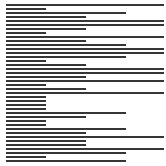
Black values are sorted
Gray values are unsorted
Red triangle marks algorithm position
heapsort: mathematical analysis
Proposition: Heap construction uses \(\leq 2N\) compares and \(\leq N\) exchanges
Pf sketch (assume \(N = 2^{h+1}-1\)):

\[\begin{array}{rcl} h + 2(h-1) + 4(h-2) + 8(h-3) + \ldots + 2^h(0) & \leq & 2^{h+1}-1 \\ & = & N \end{array}\]
note: left side of \(\leq\) is a tricky sum (see Discrete Math)
heapsort: mathematical analysis
Proposition: Heapsort uses \(\leq 2N \lg N\) compares and exchanges, though algorithm can be improved to \(\texttilde 1 N \lg N\) (but no such variant is known to be practical)
Significance: In-place sorting algorithm with \(N \log N\) worst-case
- Mergesort: no, linear extra space (in-place merge possible, not practical)
- Quicksort: no, quadratic time in worst case (\(N \log N\) worst-case quicksort possible, but not practical)
- Heapsort: yes!
heapsort: mathematical analysis
Proposition: Heapsort uses \(\leq 2N \lg N\) compares and exchanges, though algorithm can be improved to \(\texttilde 1 N \lg N\) (but no such variant is known to be practical)
Bottom line: Heapsort is optimal for both time and space, but...
- Inner loop longer than quicksort's
- Makes poor use of cache (can be improved using advanced caching tricks)
- Not stable
Introsort
Goal: as fast as quicksort in practice; \(N \log N\) worst case, in place
Introsort
- Run quicksort
- Cutoff to heapsort if stack depth exceeds \(2 \lg N\)
- Cutoff to insertion sort for \(N = 16\)
In the wild: C++ STL, Microsoft .NET Framework
sorting algorithms: summary
| inplace? | stable? | best | avg | worst | remarks | |
|---|---|---|---|---|---|---|
| selection | X | \(\onehalf N^2\) | \(\onehalf N^2\) | \(\onehalf N^2\) | \(N\) exchanges | |
| insertion | X | X | \(N\) | \(\onequarter N^2\) | \(\onehalf N^2\) | use for small \(N\) or partially ordered |
| shell | X | \(N \log_3 N\) | ? | \(c N^a\) | tight code; subquadratic | |
| merge | X | \(\onehalf N \lg N\) | \(N \lg N\) | \(N \lg N\) | \(N \log N\) guarantee; stable | |
| timsort | X | \(N\) | \(N \lg N\) | \(N \lg N\) | improves mergesort when preexisting order | |
| quick | X | \(N \lg N\) | \(2 N \ln N\) | \(\onehalf N^2\) | \(N \log N\) probabilistic guarantee; fastest in practice | |
| 3-way qs | X | \(N\) | \(2 N \ln N\) | \(\onehalf N^2\) | improves quicksort when duplicate keys | |
| heap | X | \(N\) | \(2 N \lg N\) | \(2 N \lg N\) | \(N \log N\) guarantee; in-place | |
| ? | X | X | \(N\) | \(N \lg N\) | \(N \lg N\) | holy grail of sorting |
